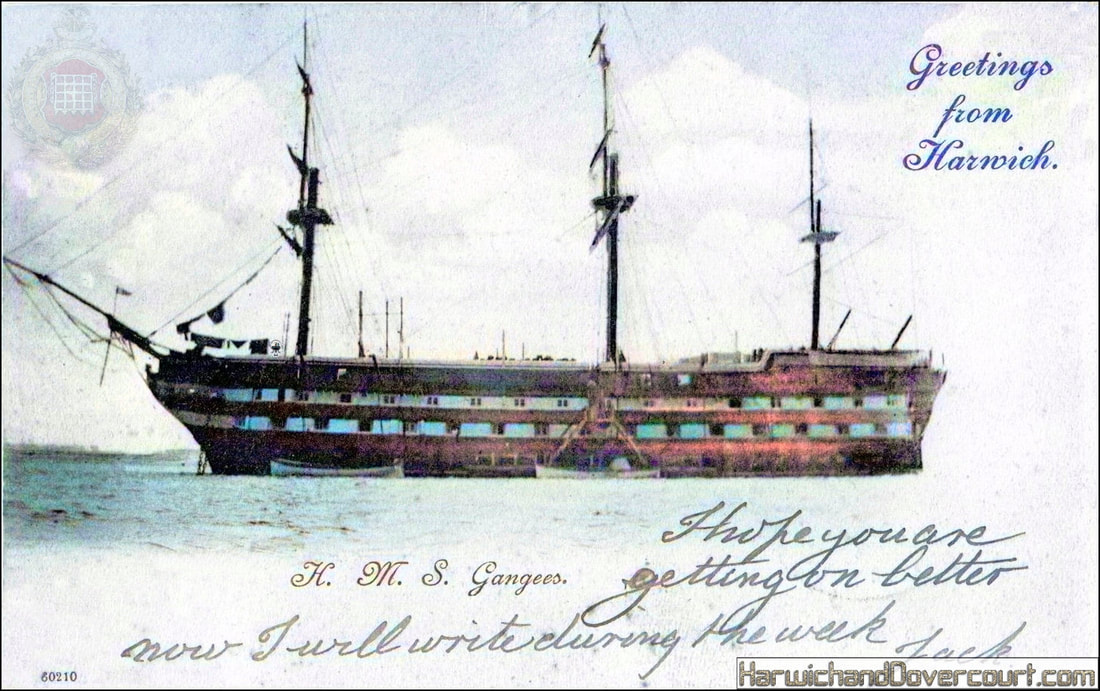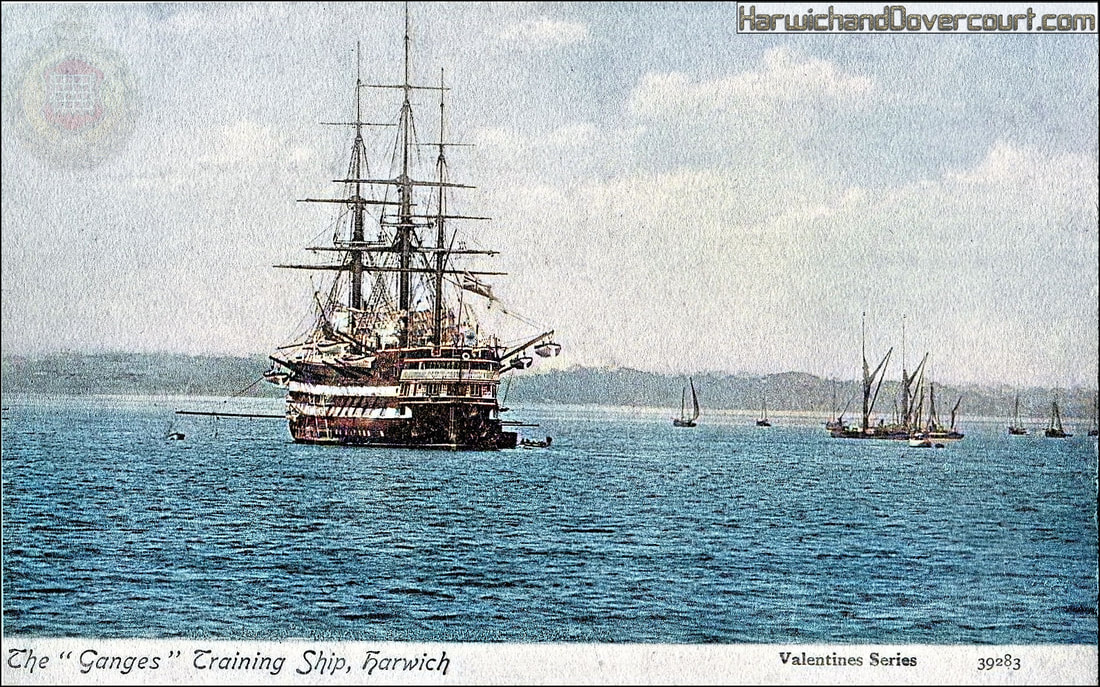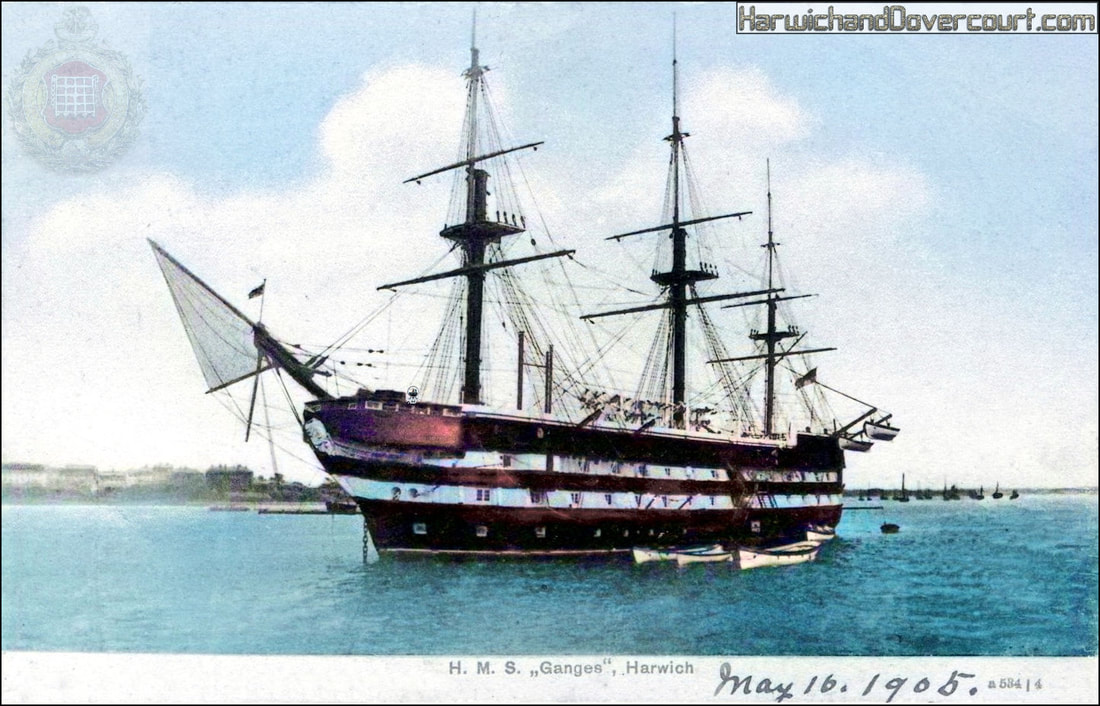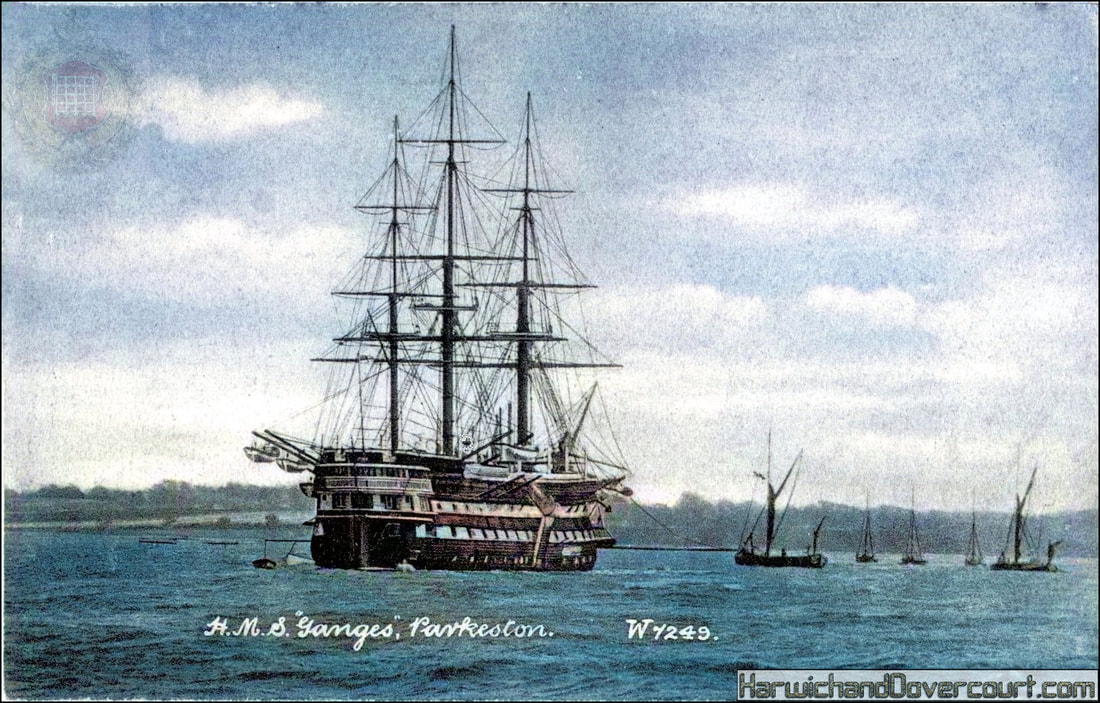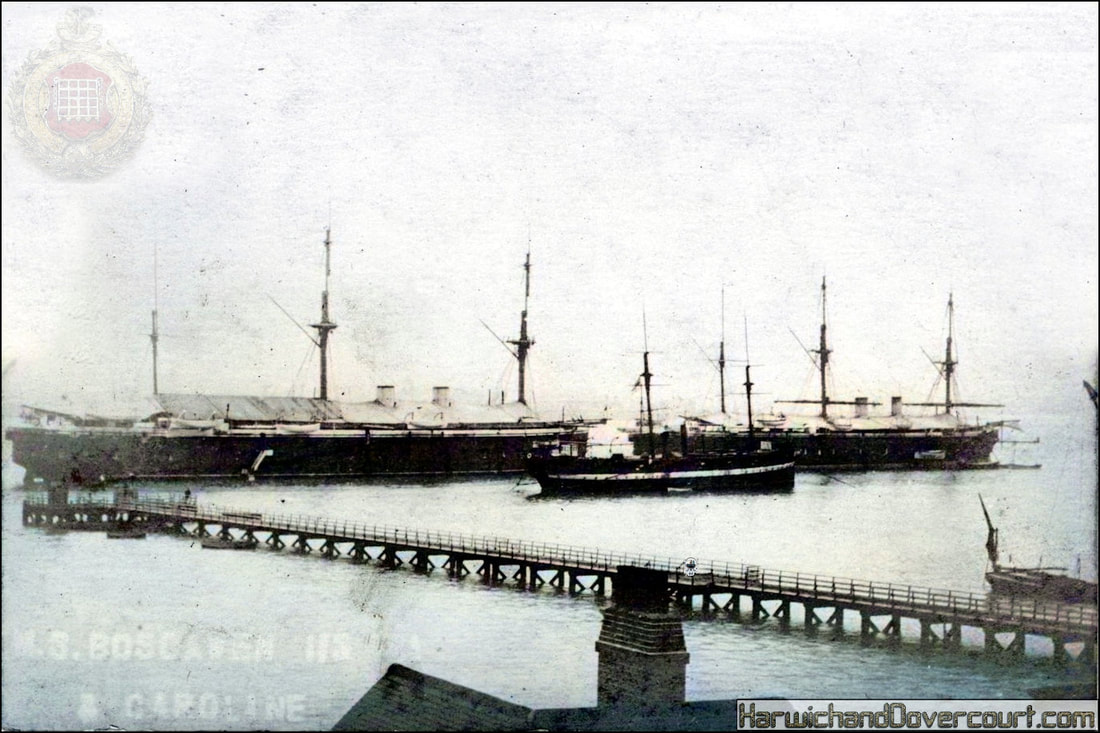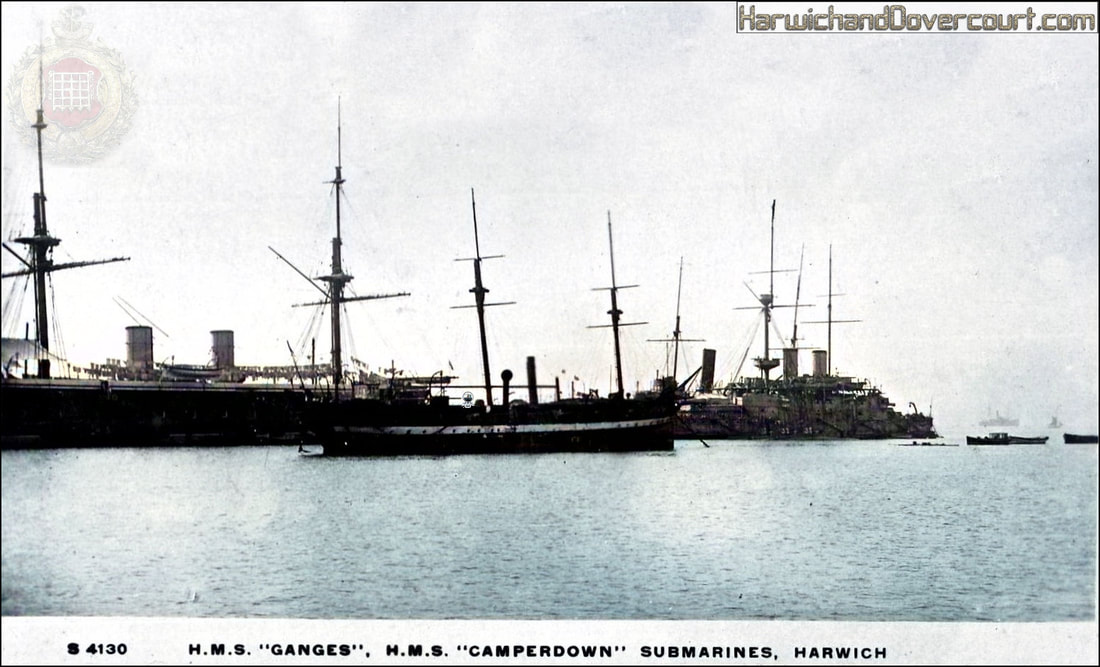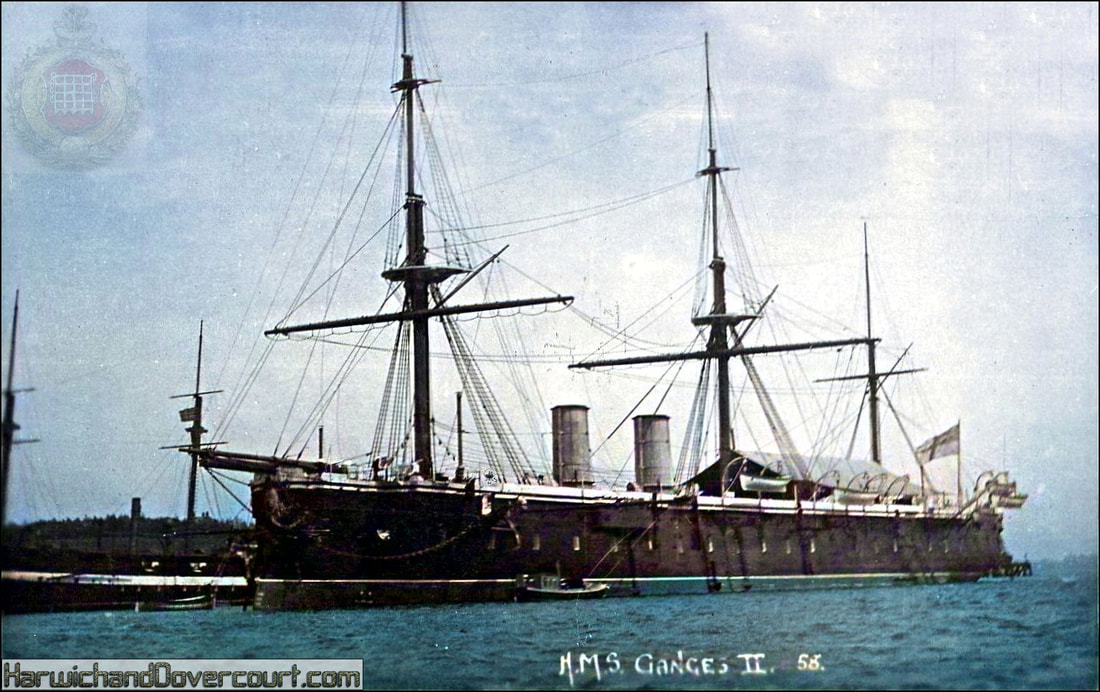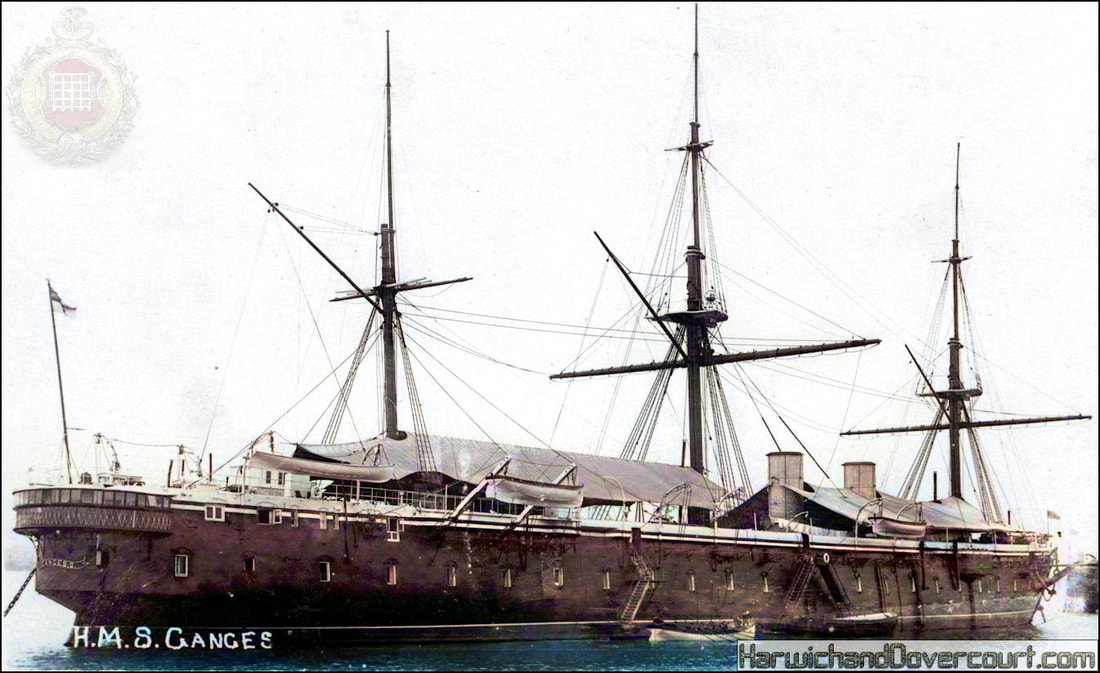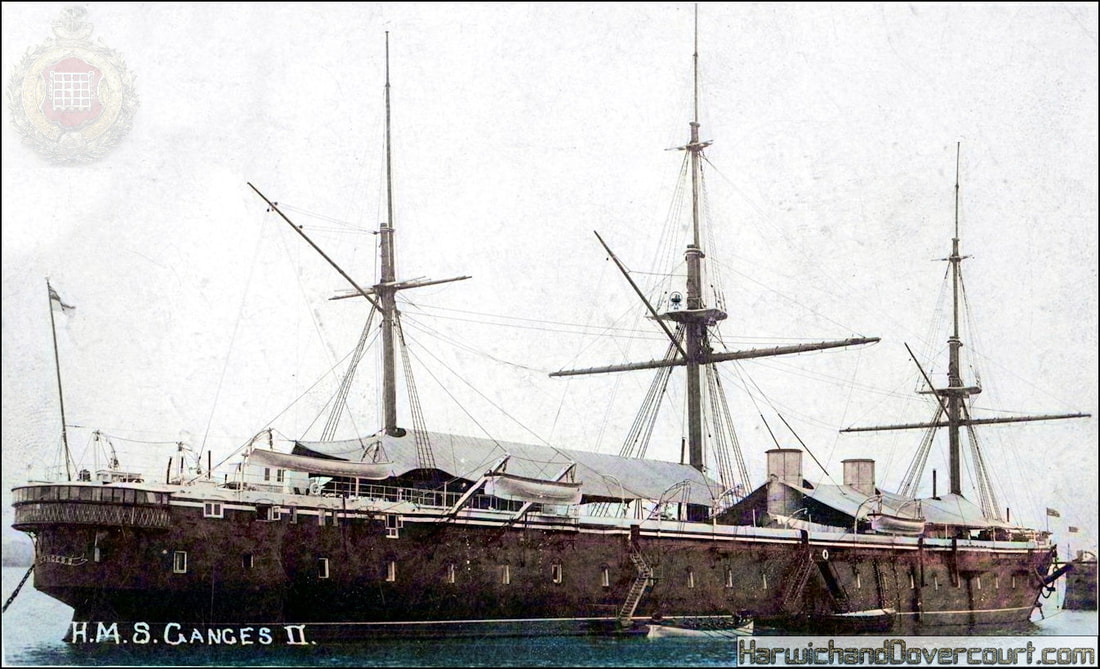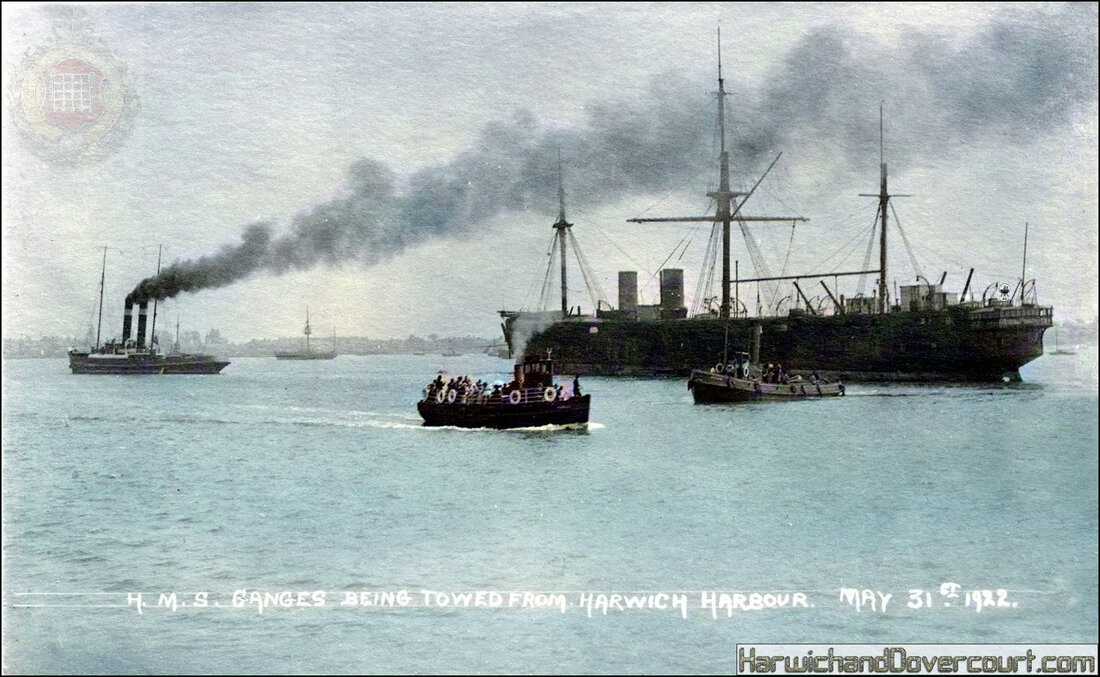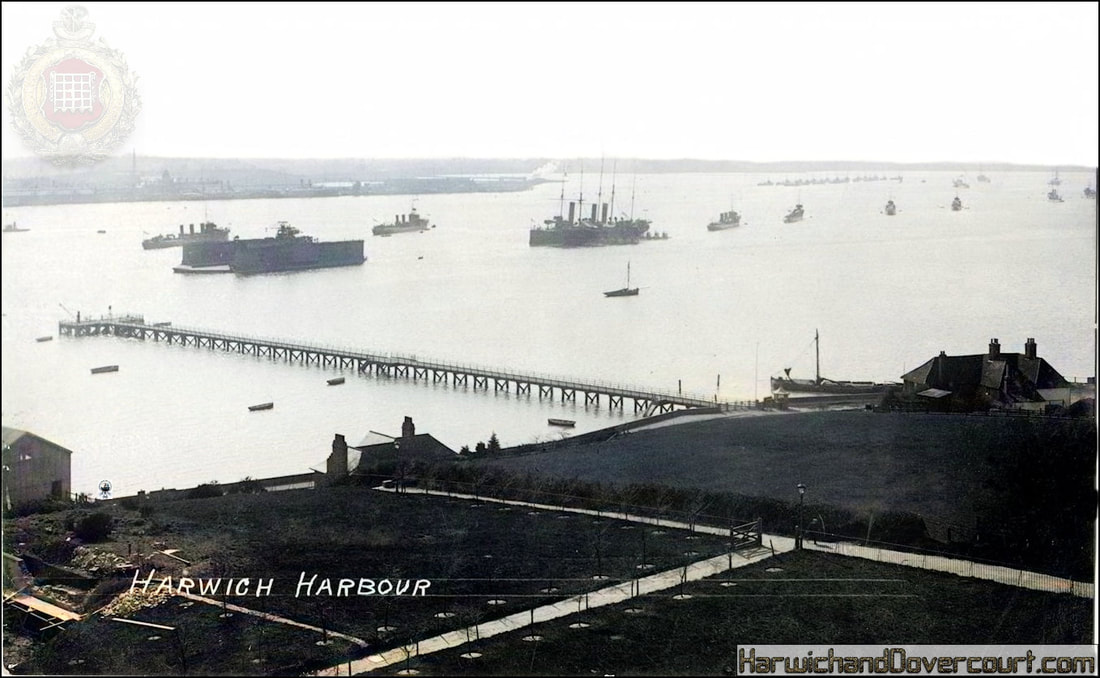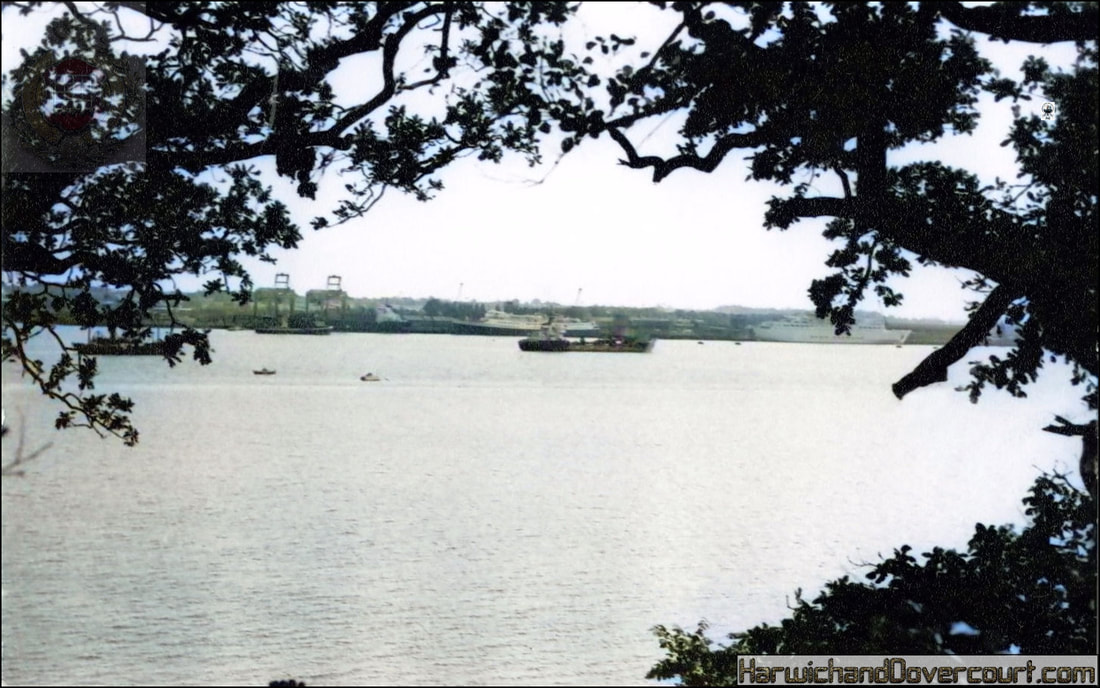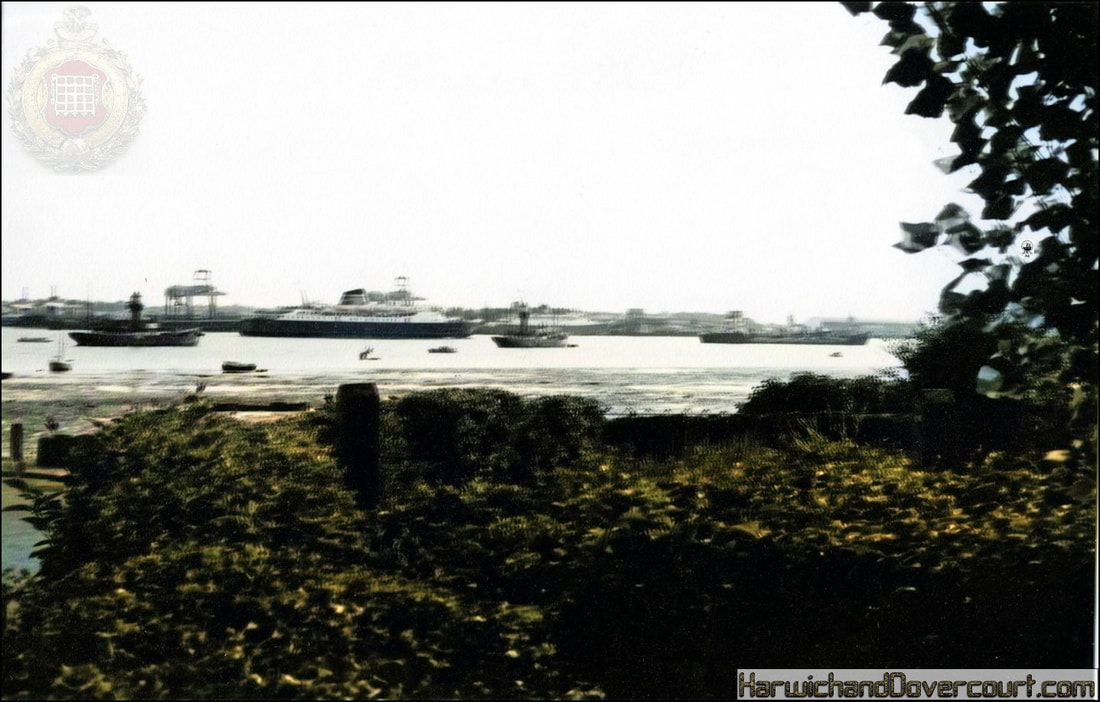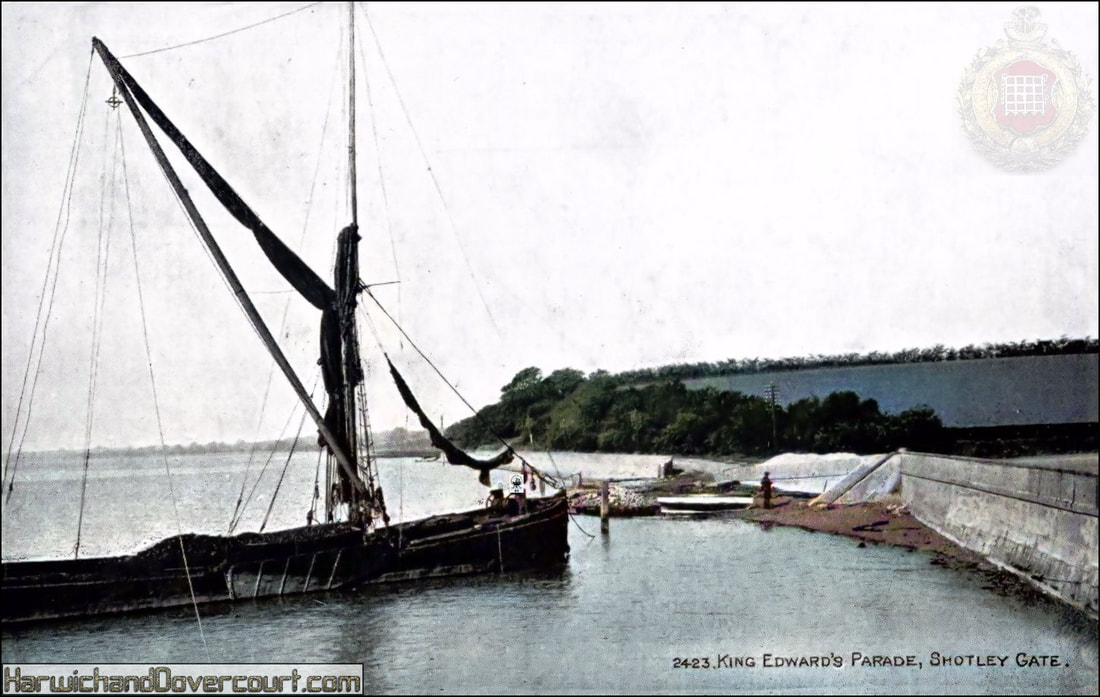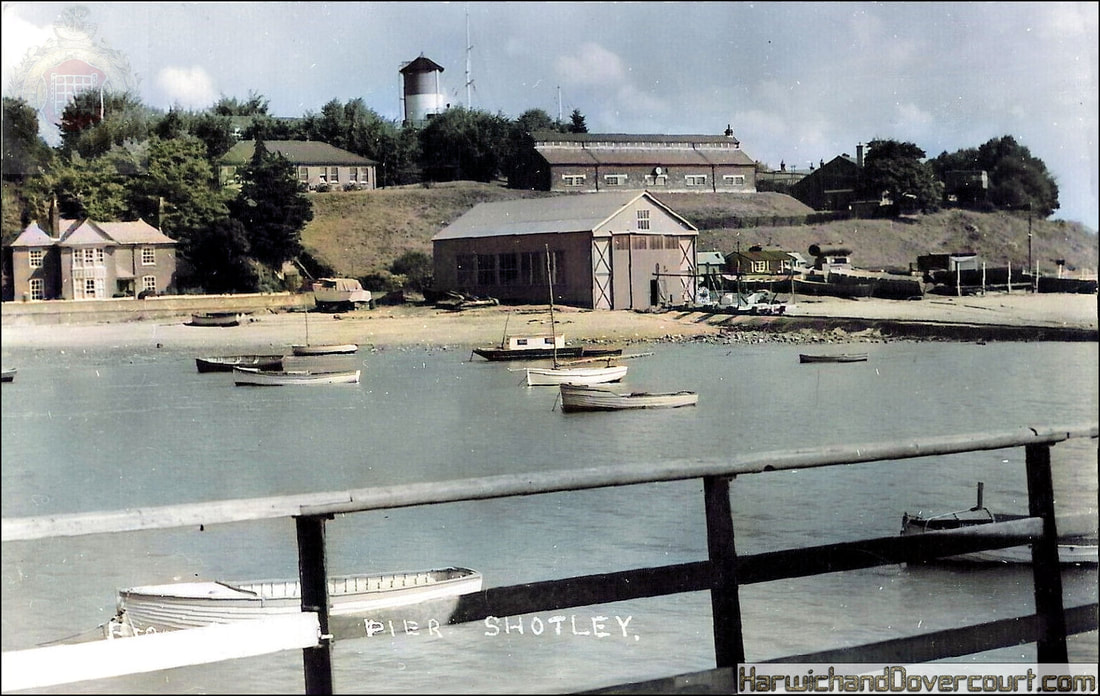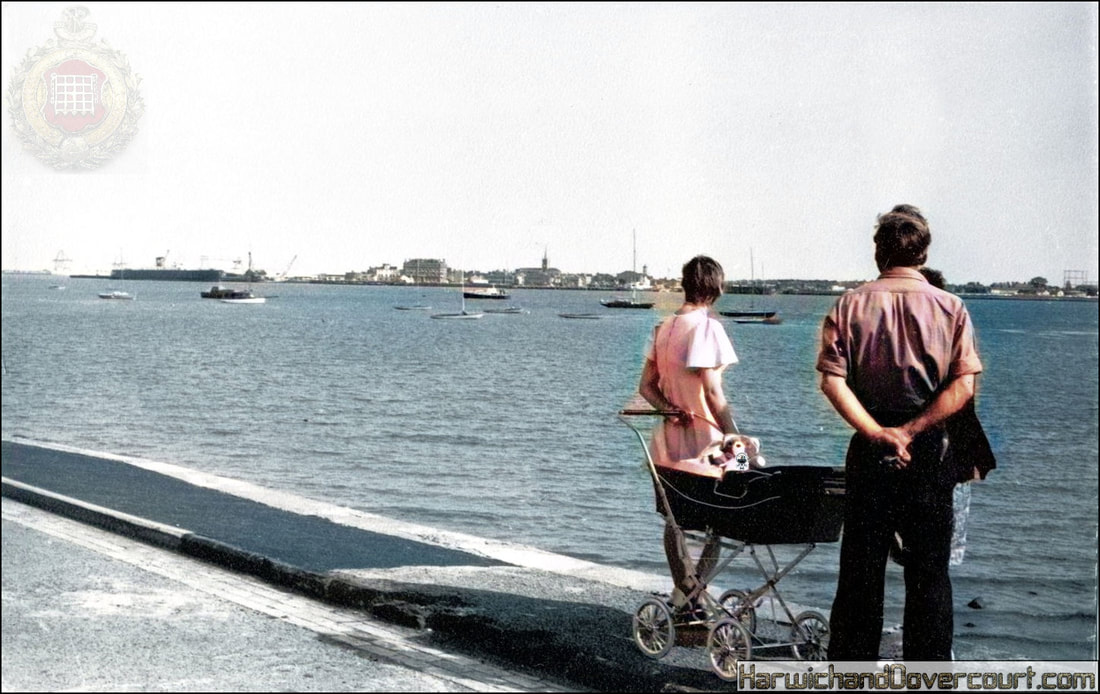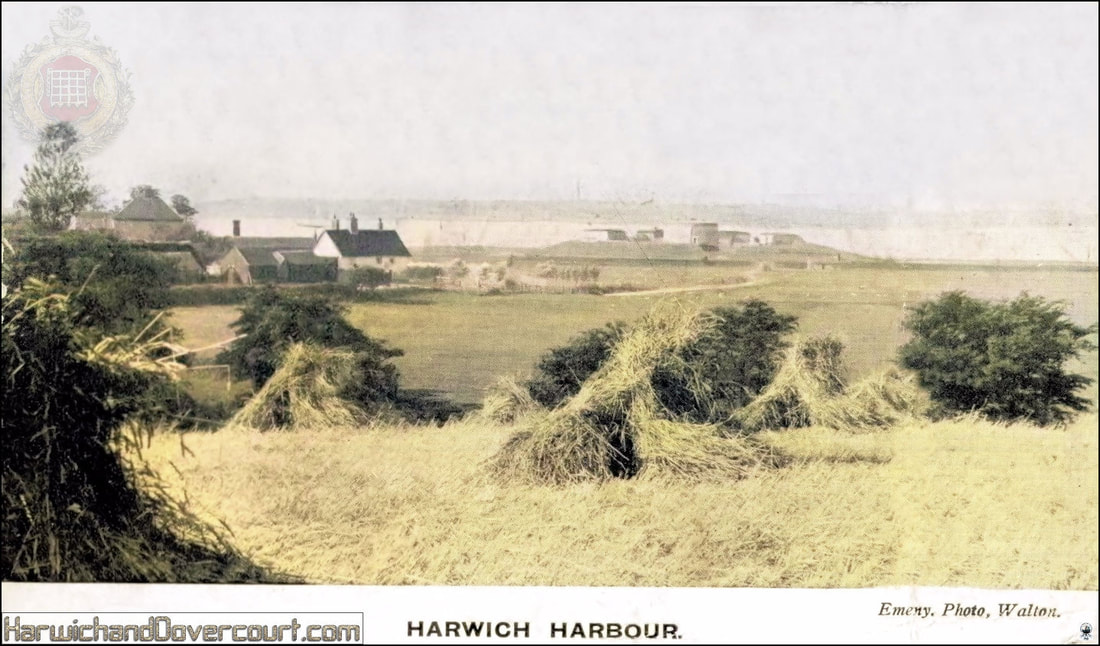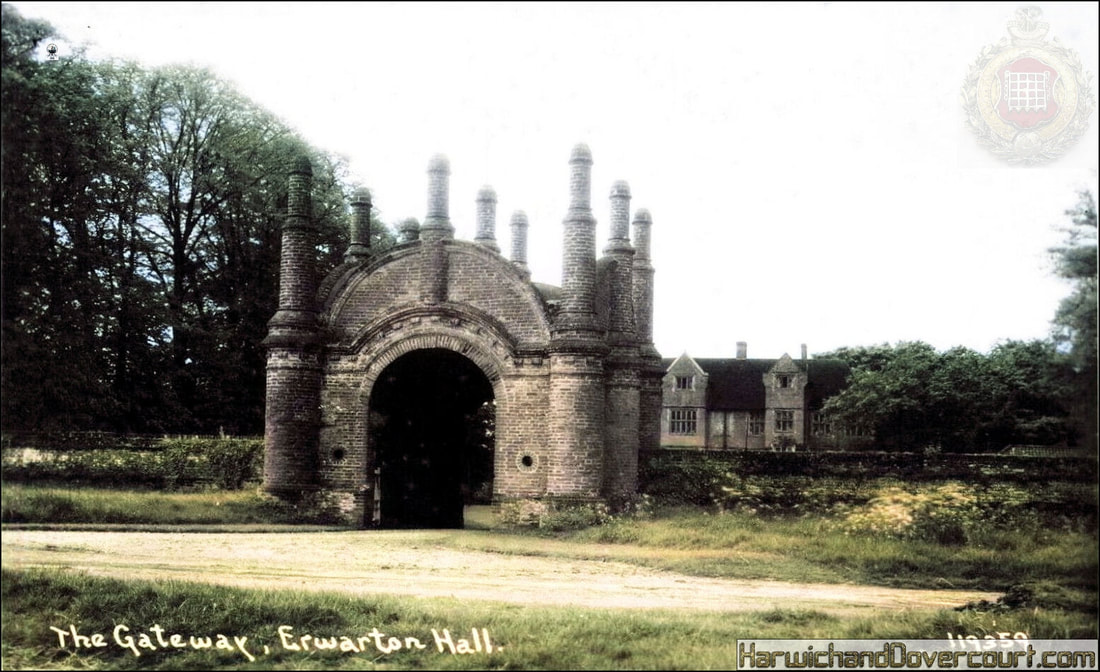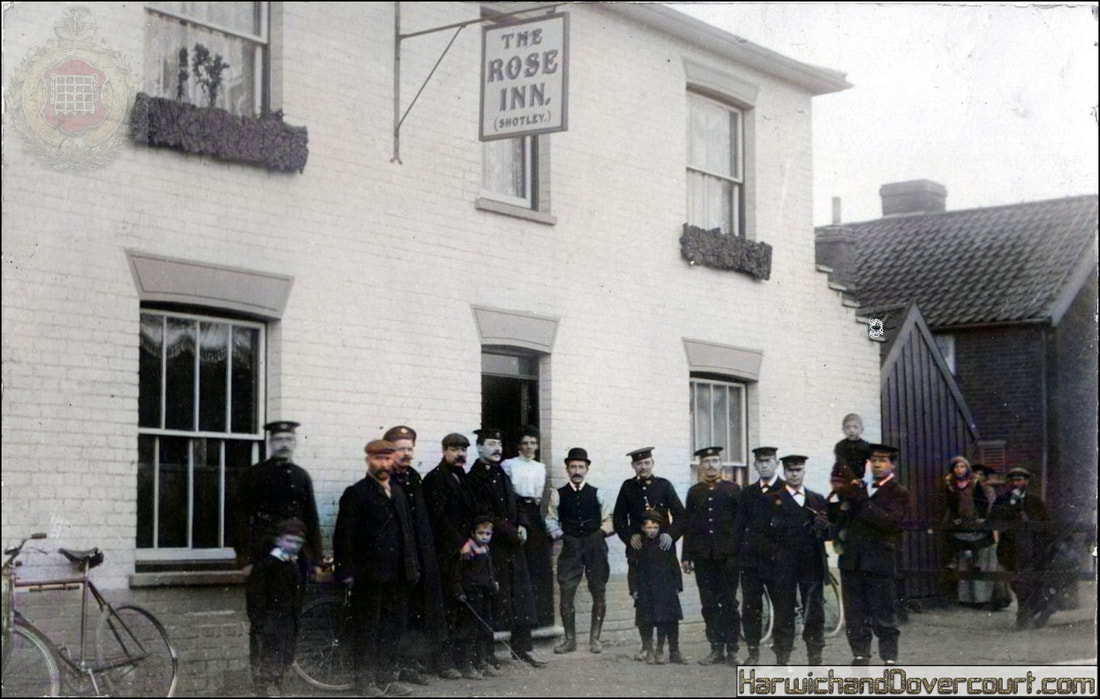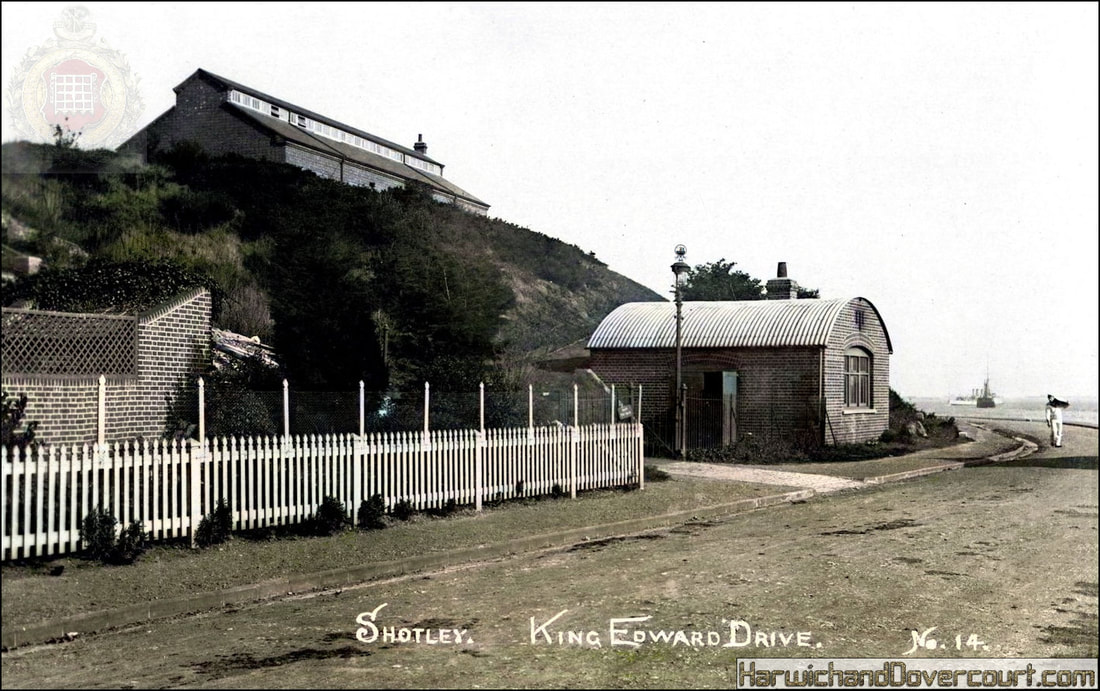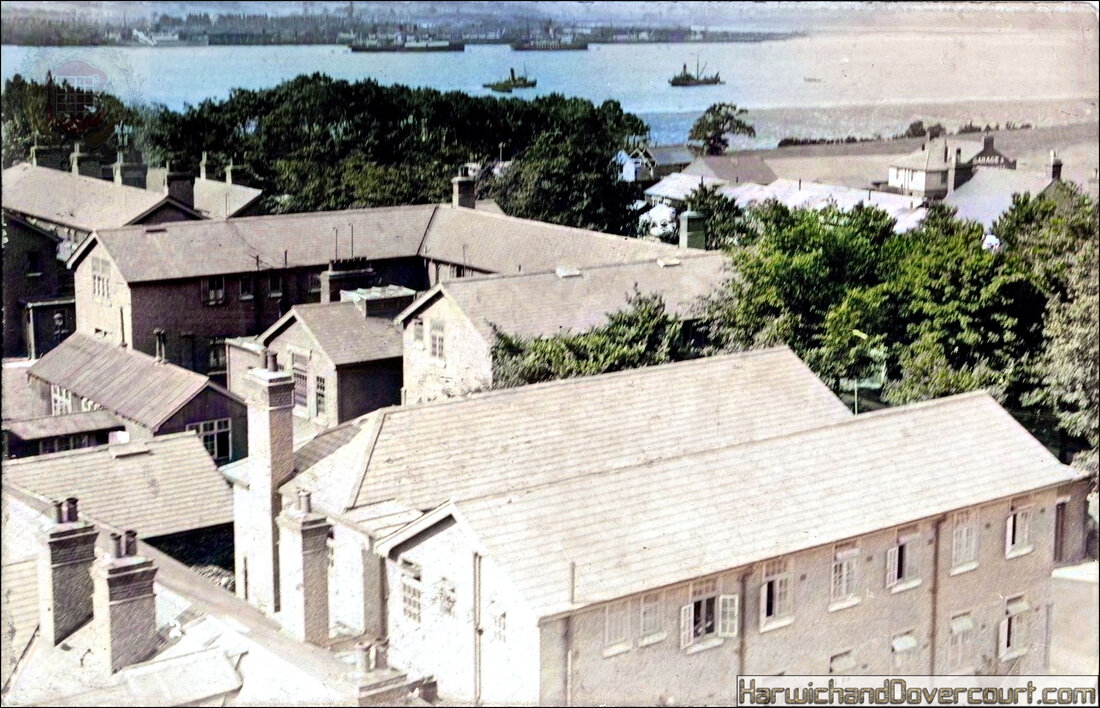~ Section 1 ~ Associated ships & the surrounding area ~
~ H.M.S. Ganges I ~
H.M. Royal Navy Training Establishment, Shotley, Suffolk (renamed "H.M.S. Ganges" in 1927).
Between 1810 - 1812 and 1850 - 1851, the land was developed into a Napoleonic-era Fort, complete with the Martello Towers (built in 1810), used to protect the estuary against French invasion.
Between 1905 and 1976, the site was used as a Naval training base, HMS Ganges, which trained over 160,000 school leavers to become Naval trainees.
Accessed through ornate entrance gates, facilities at the base included a central parade ground with a 142 ft. high ceremonial mast (the foremast of HMS Cordelia), which trainees manned for training and ceremony purposes.
The parade ground was bordered by Edwardian brick buildings, including the Nelson’s Hall (built in 1937), Gymnasium, Classrooms and Officers Mess/Quarters.
HMS Ganges had many Royal visitors over the decades including Edward, Prince of Wales (visited in 1930), HM The Queen (visited in 1961), HRH Prince Philip (1956, 1973 & 1976), Lord Mountbatten (1975), HRH Princess Marina, Duchess of Kent (1941), and HRH Prince Henry, Duke of Gloucester (1943), with the VIP guests watching Naval drills in front of the ceremonial mast and touring the Naval facilities and the historic Fort and Towers.
When the naval base closed in 1976, HRH Prince Philip took the final salute, marking the departure of the Navy.
Between 1979 and 1999, the base continued to be used by the military and other services, with the Officers Quarters providing accommodation for the RAF, and between 1986 and 1999, the facility was used as a Police Training Centre for forces from the East Anglia Region.
The nearby adjacent Shotley Marina and Boatyard, which opened in 1986, was originally a seaplane torpedo testing and manufacturing centre founded in 1919, which was linked to the Royal Naval base.
Between 1810 - 1812 and 1850 - 1851, the land was developed into a Napoleonic-era Fort, complete with the Martello Towers (built in 1810), used to protect the estuary against French invasion.
Between 1905 and 1976, the site was used as a Naval training base, HMS Ganges, which trained over 160,000 school leavers to become Naval trainees.
Accessed through ornate entrance gates, facilities at the base included a central parade ground with a 142 ft. high ceremonial mast (the foremast of HMS Cordelia), which trainees manned for training and ceremony purposes.
The parade ground was bordered by Edwardian brick buildings, including the Nelson’s Hall (built in 1937), Gymnasium, Classrooms and Officers Mess/Quarters.
HMS Ganges had many Royal visitors over the decades including Edward, Prince of Wales (visited in 1930), HM The Queen (visited in 1961), HRH Prince Philip (1956, 1973 & 1976), Lord Mountbatten (1975), HRH Princess Marina, Duchess of Kent (1941), and HRH Prince Henry, Duke of Gloucester (1943), with the VIP guests watching Naval drills in front of the ceremonial mast and touring the Naval facilities and the historic Fort and Towers.
When the naval base closed in 1976, HRH Prince Philip took the final salute, marking the departure of the Navy.
Between 1979 and 1999, the base continued to be used by the military and other services, with the Officers Quarters providing accommodation for the RAF, and between 1986 and 1999, the facility was used as a Police Training Centre for forces from the East Anglia Region.
The nearby adjacent Shotley Marina and Boatyard, which opened in 1986, was originally a seaplane torpedo testing and manufacturing centre founded in 1919, which was linked to the Royal Naval base.
~ 01 Departure of H.M.S. Ganges for Harwich (1899) H&D ~
HMS Ganges was a training ship and later stone frigate of the Royal Navy. She was established as a boys' training establishment in 1865 and was based aboard a number of hulks before moving ashore. She was based alternately in Falmouth, Harwich (from 1899) and Shotley (from 1905). She remained in service at RNTE Shotley until October 1976.
~ 02 #60210 H.M.S.Ganges Greetings from Harwich (1903) H&D ~
~ 03 #39283 The Ganges Training Ship Harwich (1901) Valentines H&D ~
~ 04 A534-4 HMS Ganges, Harwich (1905) H&D ~
~ 05 W7249 HMS Ganges (1903) Wyndham Series H&D ~
H.M.S. Ganges at Harwich (1903)
HMS Ganges was towed to Harwich by the tug Alligator. She arrived on 11 November 1899. HMS Caroline had arrived shortly before Ganges and served as a temporary hospital ship. In 1907 the 143-foot (44 m) high mast of the old steam corvette HMS Cordelia was erected at Ganges and became a major landmark.
HMS Ganges was towed to Harwich by the tug Alligator. She arrived on 11 November 1899. HMS Caroline had arrived shortly before Ganges and served as a temporary hospital ship. In 1907 the 143-foot (44 m) high mast of the old steam corvette HMS Cordelia was erected at Ganges and became a major landmark.
~ 06 H.M.S. Ganges, Harwich (1902) H&D ~
~ H.M.S. Ganges II ~
~ 07 HMS Caroline, HMS Boscawen II & III (Agincourt) at Shotley (1905) H&D ~
HMS Ganges II
The old H.M.S. Minotaur had been HMS Ganges since 1906, but was renamed H.M.S. Ganges II on 25 April 1908. H.M.S. Caroline was renamed H.M.S. Ganges that month as her replacement.
By 1912 H.M.S. Ganges II was being used as an overflow ship as the number of boys in the establishment increased, and she was duly moved closer inshore. A floating dock was also moored nearby for the use of destroyers and submarines.In September 1913 H.M.S. Ganges (the former H.M.S. Caroline) was renamed H.M.S. Powerful III and left the establishment. H.M.S. Ganges II (the former H.M.S. Minotaur) was renamed H.M.S. Ganges. She became the base ship of the establishment during the First World War. On 8 October 1913 H.M.S. Ganges II became an independent command and was based at RNTE Shotley
The old H.M.S. Minotaur had been HMS Ganges since 1906, but was renamed H.M.S. Ganges II on 25 April 1908. H.M.S. Caroline was renamed H.M.S. Ganges that month as her replacement.
By 1912 H.M.S. Ganges II was being used as an overflow ship as the number of boys in the establishment increased, and she was duly moved closer inshore. A floating dock was also moored nearby for the use of destroyers and submarines.In September 1913 H.M.S. Ganges (the former H.M.S. Caroline) was renamed H.M.S. Powerful III and left the establishment. H.M.S. Ganges II (the former H.M.S. Minotaur) was renamed H.M.S. Ganges. She became the base ship of the establishment during the First World War. On 8 October 1913 H.M.S. Ganges II became an independent command and was based at RNTE Shotley
~ 08 H.M.S. Ganges & Pier, Harwich Harbour, Essex (1908) H&D ~
H.M.S. Ganges & Pier, with Parkeston Quay seen in the background (1913)
In the spring of 1912, Harwich received its first “Floating Dock” one of three along the East Coast. One for battleships, to be stationed in the Medway; one for destroyers, to be stationed at Harwich; and one for submarines, to be stationed at Dover. The Harwich floating Dock was built in 1911 at a cost of £28,801 and could hold two destroyers at the same time.
Alongside the dock is HMS Ganges II (formally HMS Minotaur), which was being used as an overflow ship as the number of boys in the Training establishment at Shotley increased. The floating dock moored nearby was ctually used for both destroyers and submarines. She became the base ship of the establishment during the First World War and from 1914 to 1918; HMS Ganges was commanded by Commodore (later Rear-Admiral) G. C. Cayley.
In 1916 the HMS Ganges was bombed by a German Zeppelin, with subsequent rationing measures nearly produced a mutiny in 1917 but dispersed peacefully. Other wartime activities included the establishment of a trawler base at Ganges II, and the completion of 600 miles of anti-submarine nets by boys and staff. In 1918 the base suffered outbreaks of influenza and diphtheria. Armistice Day was celebrated by a display of mast manning.
In the spring of 1912, Harwich received its first “Floating Dock” one of three along the East Coast. One for battleships, to be stationed in the Medway; one for destroyers, to be stationed at Harwich; and one for submarines, to be stationed at Dover. The Harwich floating Dock was built in 1911 at a cost of £28,801 and could hold two destroyers at the same time.
Alongside the dock is HMS Ganges II (formally HMS Minotaur), which was being used as an overflow ship as the number of boys in the Training establishment at Shotley increased. The floating dock moored nearby was ctually used for both destroyers and submarines. She became the base ship of the establishment during the First World War and from 1914 to 1918; HMS Ganges was commanded by Commodore (later Rear-Admiral) G. C. Cayley.
In 1916 the HMS Ganges was bombed by a German Zeppelin, with subsequent rationing measures nearly produced a mutiny in 1917 but dispersed peacefully. Other wartime activities included the establishment of a trawler base at Ganges II, and the completion of 600 miles of anti-submarine nets by boys and staff. In 1918 the base suffered outbreaks of influenza and diphtheria. Armistice Day was celebrated by a display of mast manning.

